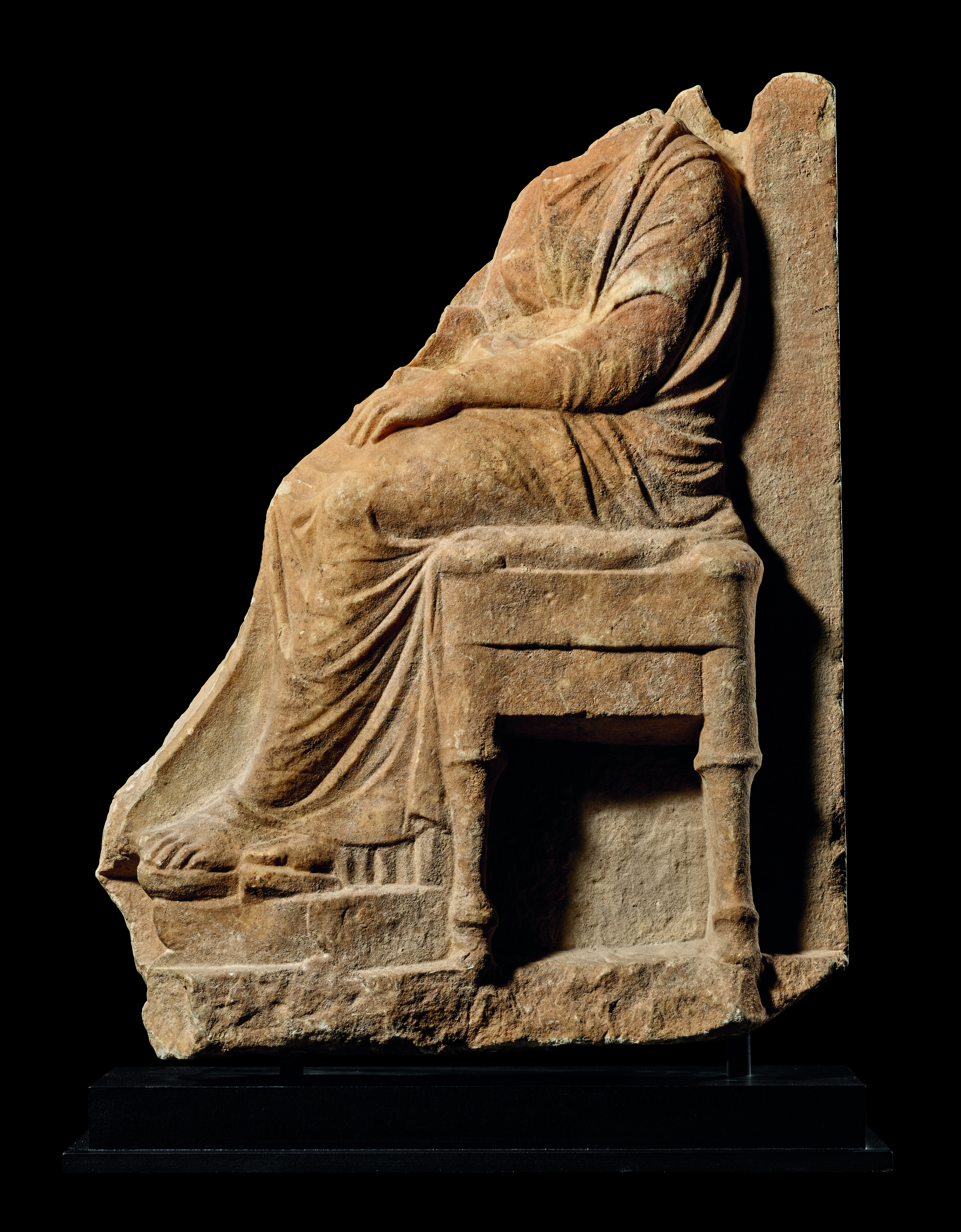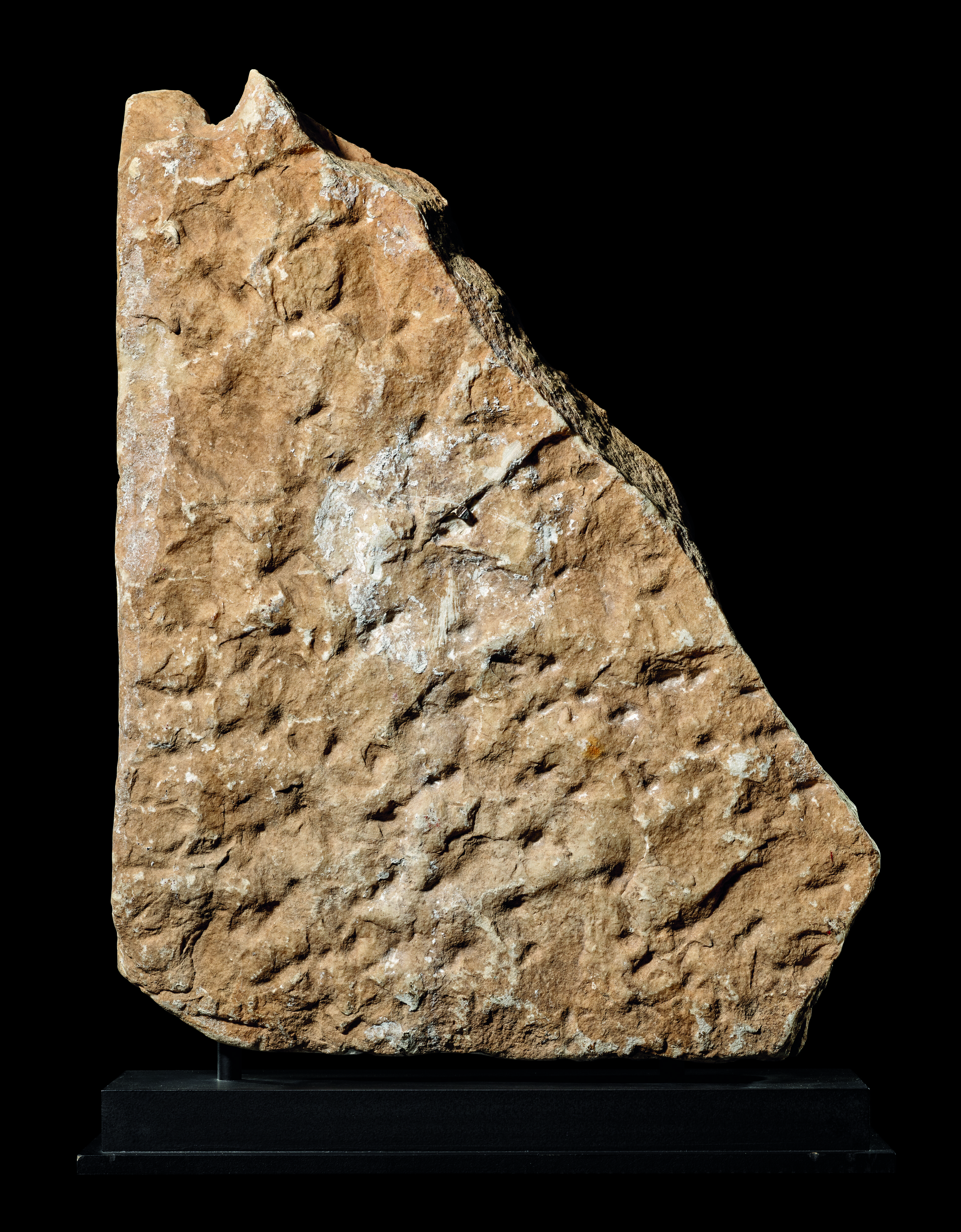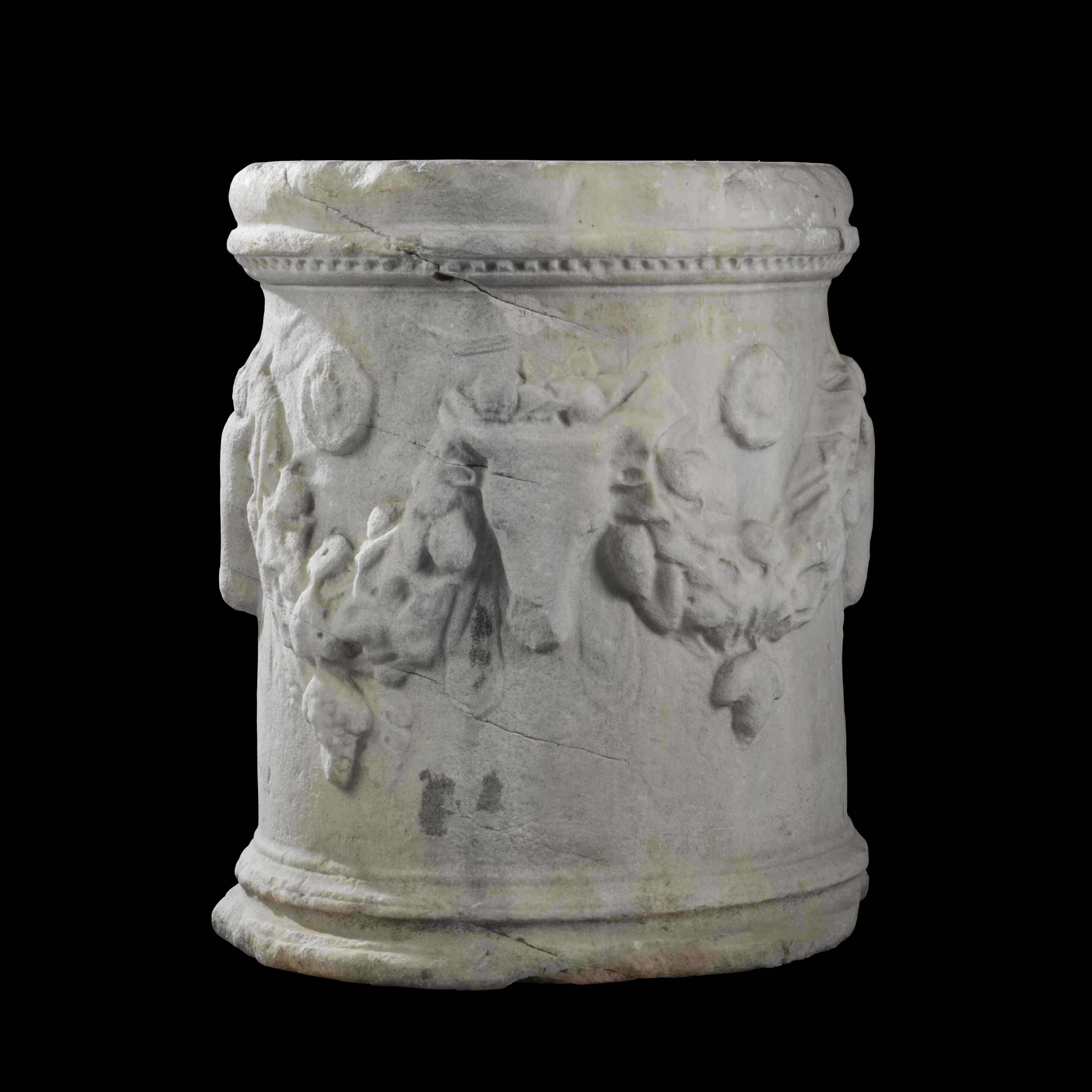A woman is seated on a cushioned diphros facing left, her upper body is rendered in a slight three-quarter view. The woman’s head was no doubt in profile, but is now missing. She wears a chiton as well as a himation which is draped over her left side and behind onto her back. Her left forearm rests on her lap and her lower legs are crossed. Her feet, bare except for sandals, rest on a block-like foot stool placed diagonally, the front side of which is carved with a recessed panel and foot support. The woman's right hand appears to have been outstretched to the right for a handshake with a standing figure.
Note
The subject matter of a seated woman connects our fragment to a group of Attic stelai of the mid 4th century BC. These stelai are characterised by the slanted positions of the figures and strong plastic volumes which provide more apparent three-dimensionality and a greater spatiality.
Concerning the sculptural motives of funerary monuments, a preference can be observed for the representation of the seated woman. Experts interpret this predilection as a reflection of Athenian values, since the memorials served a public purpose as well as a private one. This particular gravestone is sculpted in high relief, further highlighting its importance as a monument. The composition of this funerary stele is closely paralleled to those in the Metropolitan Museum of Art, New York, Rogers Fund, 1907, Inv. no. 07.286.109 and another at the Getty Villa, Malibu, Inv. no. 79.AA.216.








